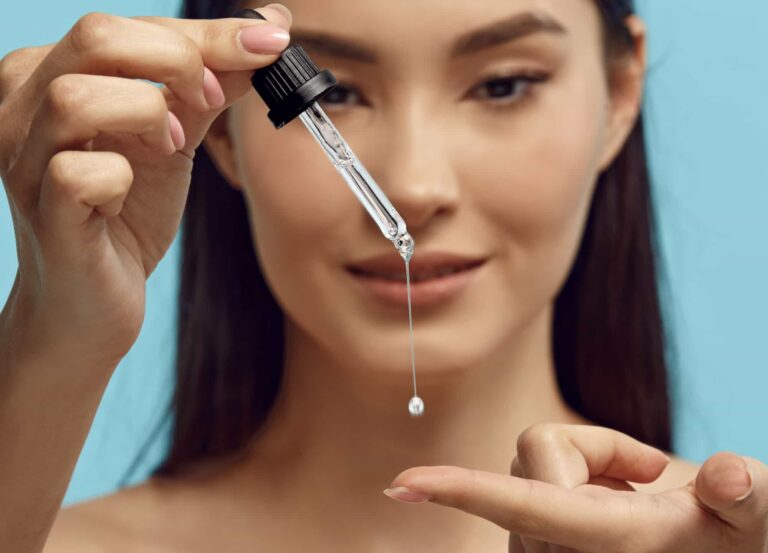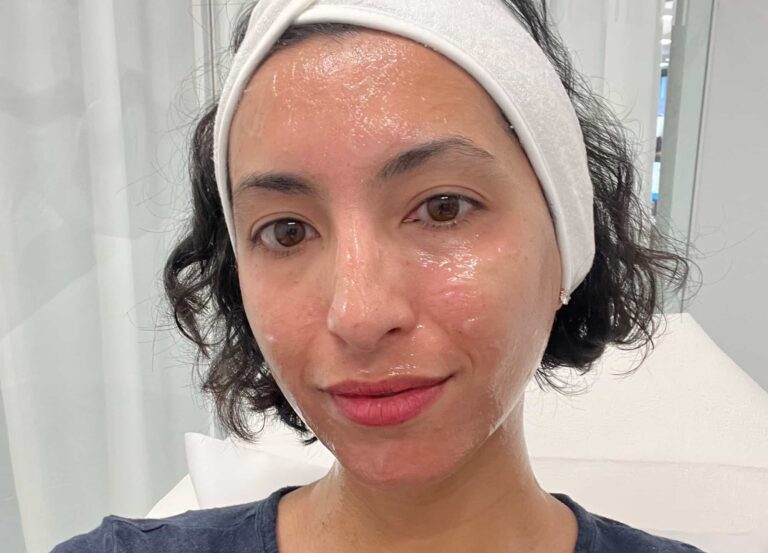Melasma is a harmless but frustratingly stubborn condition, primarily caused by hormonal changes (including during pregnancy) and sun exposure that results in patches of discoloration on the skin. And while there’s a lot of talk about which treatments can help manage melasma, there’s far less around which treatments can hurt it.
The wrong treatment can lead to post-inflammatory hyperpigmentation and worsen existing melasma, and it’s even possible that someone who’s never had melasma could be triggered by certain laser and light therapies and then develop it. “That’s why it’s so important to be diagnosed and treated appropriately by a board-certified dermatologist for melasma, as misdiagnosis and improper treatment can be even more difficult to treat than the original melasma itself,” says Dr. Gabriela Soza, a board-certified dermatologist in New York City.
Knowing what’s okay and what’s not, however, largely depends on your individual melasma. “Not all melasma is created equal,” says Dr. Ava Shamban, a board-certified dermatologist in Beverly Hills, California. “In some patients, the pigmentation is only in the epidermis or more superficial layer, in others, it’s in the dermis, or the deeper level, and finally, some have both elements. The distribution of pigmentation dictates the right treatment.”
Even as it varies from person to person, though, there are five in-office procedures that aren’t recommended for anyone with melasma—be it light or severe.
1. Intense pulsed light (IPL)
IPL is a common first line of defense when it comes to correcting hyperpigmentation, so it seems only natural that it would also be a solution for melasma, but this is not actually the case. “While laser and light therapies are potential options for patients who are refractory [resistant] to other melasma treatment modalities, they also carry a significant risk of worsening the disease,” explains Dr. Soza.
“IPL can be helpful to treat moderate to severe melasma, if combined with an aggressive topical maintenance treatment,” she says. “However, while IPL therapy can be safe on all skin types when performed by a skilled physician, dark skin types do carry more risk, especially when it comes to melasma.” In deep skin tones, there is an increased risk that IPL will target normal endogenous skin pigment and lead to post-inflammatory hyperpigmentation. Since heat aggravates melasma, the treatment often worsens the skin condition instead of improving it, and there are even some cases of melasma being brought on by IPL.
“There are numerous studies demonstrating its safety and efficacy for melasma, yet I would still say it should be performed only on Fitzpatrick skin types I to III and by a skilled provider,” Dr. Soza adds. “I recommend avoiding IPL altogether in melasma patients. In my opinion, it’s not worth it, especially since we have much safer technologies available.”
2. Non-ablative fractional resurfacing lasers
Non-ablative fractional lasers (NAFLs), like Fraxel, get a lot of hype—and for good reason. They can transform skin, reducing the appearance of wrinkles and fine lines, improving tone and texture, and correcting hyperpigmentation. But when it comes to melasma, these lasers can do more harm than good.
“While the 1550 nm and 1927 nm NAFL have demonstrated efficacy in the treatment of melasma, there are conflicting reports on its safety,” Dr. Soza says. “It carries a higher risk of worsening melasma and causing postinflammatory hyperpigmentation than do some other safer technologies, such as picosecond lasers or Clear and Brilliant.”
3. Ablative fractionated resurfacing lasers
Although ablative fractionated resurfacing lasers (AFLs), like CO2 and erbium:YAG, decrease the amount of epidermal injury and therefore lead to fewer adverse effects, they still have the potential to worsen melasma. “Compared to fully ablative, non-fractionated lasers, there is still a higher risk of post-inflammatory hyperpigmentation compared to less aggressive lasers,” explains Dr. Soza. “The risk of PIH is too high in patients with melasma, given the aggressive nature of these lasers.”
4. Q-switched lasers
Q-switched lasers, like ruby (694 nm) and alexandrite (755 nm), may be commonly used to remove tattoos, freckles, and other dark spots, but they’re not a good solution for melasma. “These lasers fire at a longer pulse duration, meaning the tissue is exposed to heat longer, which can cause thermal damage to the surrounding tissue and lead to PIH in patients with melasma without even improving it,” Dr. Soza says. “Therefore, these are not recommended.”
Other Q-switched lasers with longer wavelengths, like Nd:YAG, can be similarly harmful. “Even a laser with a wavelength of 1064 nm can worsen melasma,” Dr. Shamban notes. “Someone may get a laser treatment for redness or capillaries and end up with new or heightened pigmentation.”
5. Certain chemical peels
Chemical peels are a popular treatment for hyperpigmentation—both because of their effectiveness and the lack of side effects or downtime. However, not all chemical peels are a great option for melasma. “While chemical peels have been shown to be effective in the treatment of melasma, there is a risk they can cause PIH or even the worsening of melasma,” Dr. Soza says. “Superficial peels, such as Jessner, glycolic acid, and retinoic acid, are preferred compared to stronger trichloroacetic acid [TCA] peels, as they tend to be less irritating and inflammatory, therefore having the least risk of complications.”











